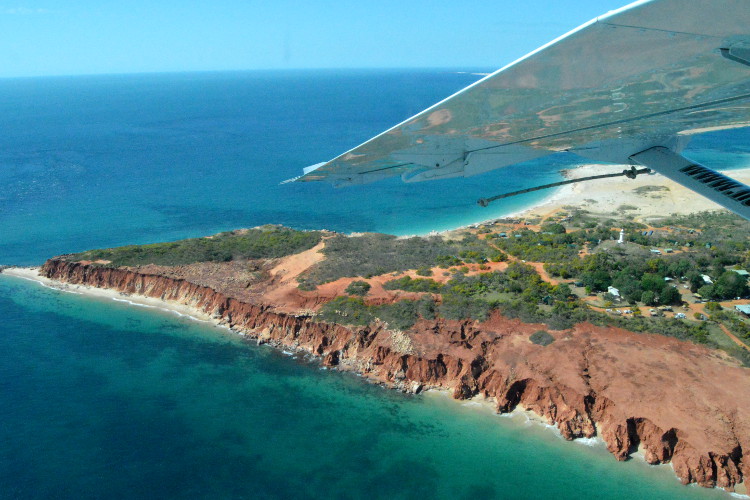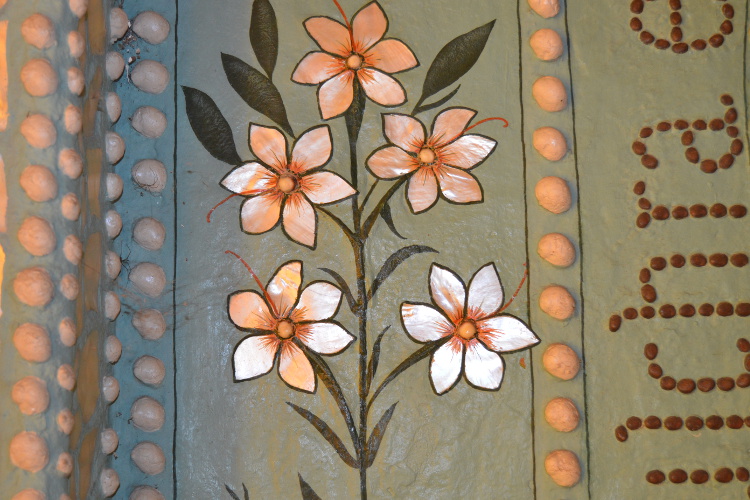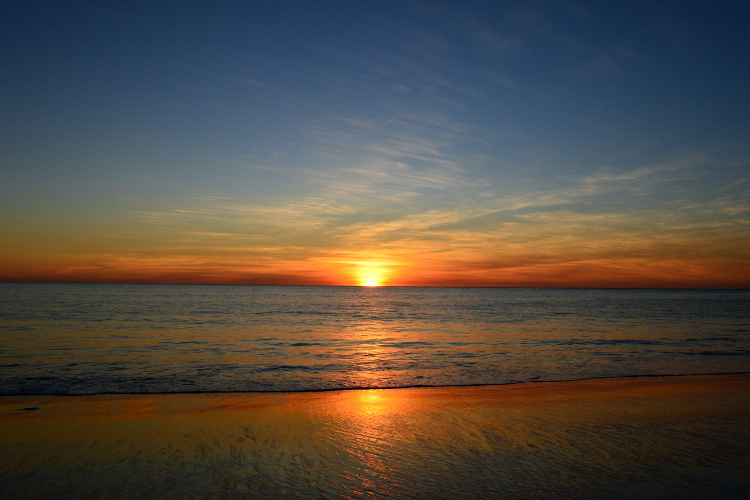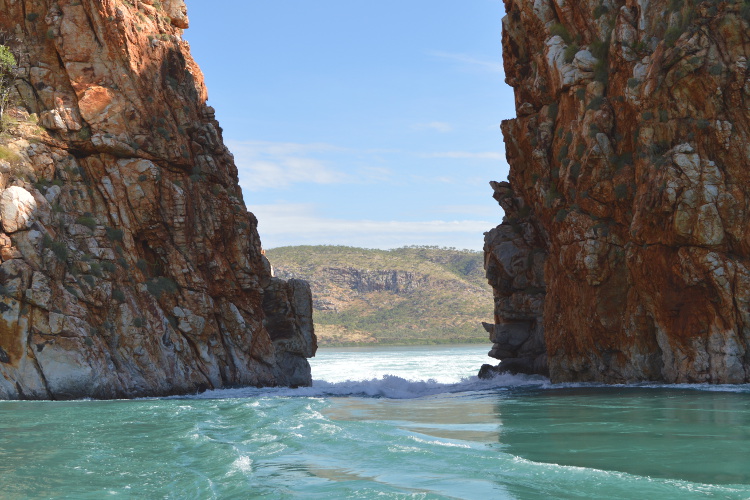In the most northwestern of Australia’s vast coastline, the isolated yet accessible Dampier Peninsula is dotted with Aboriginal communities (and a handful of privately-owned properties) where you can enjoy walking, kayaking, mudcrabbing and fishing – to name a few of the traditional Aboriginal activities on offer – and stay in accommodation from safari tents to dongas, camping to beach shelters.
As the Dampier Peninsula's communities are accessed from the Cape Leveque Road, the following communities appear in geographical order from south to north, and each as interesting as the last.

First stop is the tiny settlement of Beagle Bay, where the community showcases something unusual – a church built by two German Pallottine priests between 1915 and 1918. Confined to the land during World War I, the priests occupied themselves by constructing this beautiful building, using the local shells, mother-of-pearl, cowrie and trochus, as shimmering embellishments for the nave, altar and Stations of the Cross.

If there’s one place you can use the phrase ‘full of emptiness’ it is here. This lagoon’s empty beaches are the perfect spot for swimming, snorkeling, fishing, and lazing around with a book. Bring your binoculars to spot birds, or keep your eye out for turtles, dugongs and passing whales (from July to September). Don’t miss the ecofriendly Whale Song Café and Campsite (open June to August) at nearby Munget, overlooking stunning Pender Bay. The cafe serves up delicious mango smoothies, pizza and even stove-top coffee (yes!), plus you can sleep at a cliff-top campsite here.
In a green oasis of lawns, palm trees and ghost gums you'll find the community of Lombadina . Like Beagle Bay, it boasts a remarkable church: constructed in 1932. Admire the all-wood interior and paperbark ceiling (paperbark comes from the local woollybutt eucalyptus trees) then scout the arts and crafts centre for contemporary jewellery, screen prints and batik creations before getting out on the water in a kayak. Local Bardi guide and custodian, Robert Sibosado guides groups from nearby Chile Creek to a reef where you can snorkel among the parrot and clown fish and among the brolgas and pelicans. In season, you’ll get to shuck – and eat alfresco – oysters straight from the rocks.
Red and remote, and occupying the northernmost tip of the peninsula 220km from Broome, is Cape Leveque (pronounced Le-veek by locals). It is on the bucket list of many campers and visitors to Australia, which means some travellers race up here on a daytrip missing the spectacular red cliffs to the west (the spot for sunset viewings), the miles of sand on the Eastern Beach and the regions's fascinating Aboriginal heritage and colonial history. The Cape is named after a hydrographer, Pierre Leveque, who sailed around the area on the French ship Geographe in 1803; locals, however, know it as Kooljaman.

Local characters to look up include two Bardi Jawi people: Brian Lee of Tagalong Tours who will take you fishing and mudcrabbing, and Bundy who can share his knowledge of local bush tucker and medicine and explain how locals identify the seasons: stingrays (September), turtle mating time (October), dugongs (March to April). For those who plan to stay, Kooljaman Resort has fully-equipped safari tents, beach shelters, cabins and campsites. The restaurant serves up gourmet fare from crocodile to barramundi dishes.
Located on the beautiful King Sound at the head of the Buccaneer Archipelago (a series of more than 800 islands) is Australia’s oldest pearl farm at Cygnet Bay . Start your visit with a 1.5 hour pearl tour while looking out for snubnose dolphins, dugongs and turtles on the way. Initially Pinctada maxima pearl shells – not the pearls themselves – were of collected here and used for buttons, jewellery and furniture inlays. Then along came plastics and the pearling industry pretty much collapsed so the forefathers of Cygnet Bay Pearl learnt how to culture pearls instead. Nestle in for a night or two in luxury safari tents and cabins (the original pearling quarters) in your own patch of tropical forest or pitch a tent in one of the bush sites.

There are three ways to ‘do’ the Dampier Peninsula: on your own, on a tour, or by air. If you’re driving yourself, a 4WD is required as communities are accessed by sandy (often muddy) roads off the Cape Leveque Road. Chomley Tours offers one-day to multi-day trips to the area as does Kimberley Wild Expeditions . For an entirely different – and rather spectacular – perspective, seaplane flights head over the peninsula. Horizontal Falls Seaplane Adventures offer flight tours from Broome taking in Buccaneer Archipelago’s Horizontal Falls (don’t forget your camera!) with a seafood feast and a boat trip to the lagoons included.